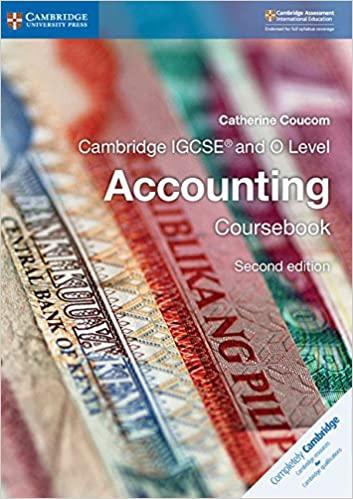Question
It is February 13, 2020 and Sam just turned 18 year's old (resident of Quebec). He has been working part-time since he was 16 year's
It is February 13, 2020 and Sam just turned 18 year's old (resident of Quebec). He has been working part-time since he was 16 year's old and is looking at making his first Registered Retirement Savings Plan (RRSP's) contribution. Before going to the bank tomorrow, he wanted you to calculate the maximum that he could contribute and claim as a deduction on his 2019 personal income tax return
Yannick's gross salary:
2018 (16 years old):$4,000
2019 (17 years old): $5,000
2020 (18 years old): $10,000
RRSP annual limits:
year 2016: $ 25370
2017: $ 26010
2018:26230
2019:26500
2020:27230
2.Anna has just become eligible to participate in her company's retirement plan; she is excited as her company matches her contributions dollar for dollar in this plan. The plan averages an annual return of 7% interest compounded monthly. Josie is 35 years old and plans to retire at age 65. She receives her pay at the beginning of each month and contributes 10% of her gross monthly salary of $2,500 into her retirement plan. What is the total amount that she will have when she retires?
3.Max finished his PhD and graduated from university in December 2018. He entered the workforce on January 1, 2019 with a gross salary of $85,000 plus an immediate $5,000 signing bonus when he started with his new employer, XYZ Inc. As a resident of Quebec, calculate his combined 2019 taxes payable
4.On December 20, 1994 the Nippon Telegraph & Telephone Corporation (NTT) issued 1 billion of 10-year debentures due December 20, 2004. The debentures carried a 4 3/4% coupon. They were priced at par, that is, they cost the investor 100 per 100 of face value. The entire amount of borrowed principal would be repaid at maturity. Interest would be paid annually upon the anniversary date of the issuance (i.e., on December 20th of each year). The debentures carried a AAA credit rating.
What was the yield to maturity of NTT's debentures at the time of issuance? What would it have been if the bonds were priced at 99 instead of 100
5.An interest rate of 3.75% per year, continuously compounded, is equivalent to what annual interest rate with semiannual compounding?
6.
Joe Plc issued a nine year bond in November 2011 with a coupon rate of 8% (face value = 100). In November 2016 (just after that year's coupon had been paid) you bought the bond at a price of 96.76. It is now exactly one year later and you have just sold the bond for 102.62.
What is the current yield
7.Inflation is forecast at 2% for the next 2 years and 3% thereafter. If you expect to receive $15,000 in 5 years' time, what is its equivalent in todays dollars?
8.What is the effective interest rate for a credit card advertised at 28% interest compounded daily?
9.How much interest will someone pay on a loan of 10 000$ if this person paying the loan of in 9 months and the loan rate is 4%?
10.Winston deposits $10 into a fund today and $20 fifteen years later. Interested is credited at a nominal discount rate of compounded quarterly for the first 10 years, and a nominal interest rate of 6% compounded semiannually thereafter. The accumulated balance in the fund at the end of 30 years is $100. Find .
Step by Step Solution
There are 3 Steps involved in it
Step: 1

Get Instant Access to Expert-Tailored Solutions
See step-by-step solutions with expert insights and AI powered tools for academic success
Step: 2

Step: 3

Ace Your Homework with AI
Get the answers you need in no time with our AI-driven, step-by-step assistance
Get Started


